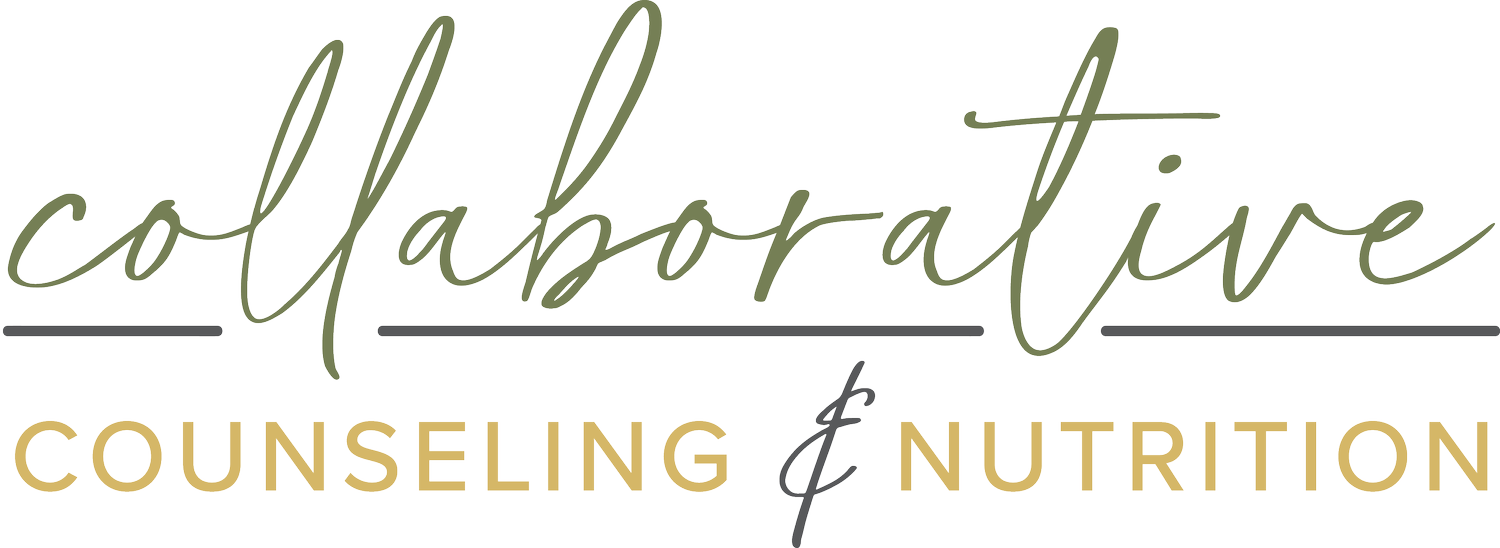Binge Eating Disorder (BED)
What is Binge Eating Disorder (BED)?
Today we want to share information about another eating disorder diagnosis our team sees on a regular basis Binge-Eating Disorder (BED). It’s the most common eating disorder in the United States, with approximately 8% of American adults suffering from BED in their lifetime. [1]. BED, a sometimes misunderstood mental health condition, is characterized by frequent episodes of overeating with accompanying feelings of guilt, shame, and loss of control [3].
Like all eating disorders, BED can affect all genders and ethnicities. That said, more than half of those diagnosed with BED are women [1]. Additionally, Black, Hispanic, and Asian American women have higher rates of diagnosis [1]. Dieting can influence the development of BED, as women and girls who diet are 12 times more likely to binge eat than those who do not [1].
Diagnostic Criteria
Some of the criteria a practitioner would look for in a BED diagnosis include:
recurrent binge-eating episodes of eating unusually large amounts of food, often past the point of discomfort, in about a 2-hour period
a binge-eating episode NOT followed by purging, excessive exercise, or fasting
binge-eating episodes occurring at least 1x per week for 3 months
Binge episodes can be associated with the following:
eating more rapidly than normal
eating to the point of uncomfortable fullness
eating large amounts of food even if not physically hungry
eating alone or in secret due to embarrassment over the amount of food eaten
developing food rituals
feeling depressed, guilty, and/or distressed after eating [2]
It’s important to note that someone may experience a “subjective” or “perceived” binge without meeting the criteria for BED. For example, eating after a long period of restriction and then perceiving the quantity of food consumed as “too much”.
What Causes BED?
Like many mental illnesses, BED can develop for a variety of reasons, based on the individual. Studies show genetic, psychological, and cultural/societal (especially diet culture) factors all play a role, as well as beliefs about food [3]. Approximately 95% of people diagnosed with BED have a parent with BED and/or substance abuse issues, and approximately half of the risk for BED is genetic [4].
Those with BED might struggle with low self-esteem, feelings of inadequacy and loneliness, and negative body image [3]. More than half of people diagnosed with BED have co-occurring anxiety disorders, nearly half have co-occurring mood disorders, and one in ten have a co-occurring substance use disorder [4].
Treatment
There are a few options for treating BED, including psychotherapy, medication, and nutrition changes, all of which should be discussed with your preferred practitioner or treatment team. On the therapy side of things, Cognitive Behavioral Therapy (CBT), Interpersonal Therapy (IP), and Motivational Interviewing (MI) are some of the most widely used modalities. Studies show that CBT and IP are highly effective at reducing binge-eating episode frequency.
Seeking Help
The therapists and dietitians at Collaborative Counseling and Nutrition specialize in treating eating disorders, including BED. If you or a loved one is struggling with BED, please reach out to our team today! We know it can be difficult to reach out, but we would love to help!
Sources Used:
[1] Binge eating disorder | Office on Women’s Health. (n.d.). Retrieved October 31, 2022, from https://www.womenshealth.gov/mental-health/mental-health-conditions/eating-disorders/binge-eating-disorder
[2] American Psychiatric Association. (2013). Diagnostic and Statistical Manual of Mental Disorders, 5th Edition: DSM-5 (5th ed.). American Psychiatric Publishing.
[3] Binge Eating Disorder Treatment | Binge Eating Treatment Recovery. (n.d.). Eating Recovery Center. Retrieved October 31, 2022, from https://www.eatingrecoverycenter.com/conditions/binge-eating/treatment
[4] Ulfvebrand, S., Birgegard, A., Norring, C., Hogdahl, L., & von Hausswolff-Juhlin, Y. (2015). Psychiatric comorbidity in women and men with eating disorders results from a large clinical database. Psychiatry Research, 230(2), 294-299.
[5] Peat, C. M., Brownley, K. A., Berkman, N. D., & Bulik, C. M. (2012). Binge eating disorder: Evidence-based treatments. Current psychiatry, 11(5), 32–39.
Collaborative Counseling & Nutrition is an outpatient nutrition and body image counseling center, with locations in Indianapolis and Carmel, that provides compassionate, holistic eating disorder treatment. Through practicing mindfulness, intuition, and Health At Every Size, we are on a mission to help you find a true state of well-being! We take an anti-diet, weight-inclusive approach with all our clients and work to help guide you towards a way of healthy living designed by you, just for you! This post is for education purposes only and should not be used as a substitute for treatment for an eating disorder. If you are looking for a registered dietitian or therapist to assist you on your recovery journey, please reach out today!

